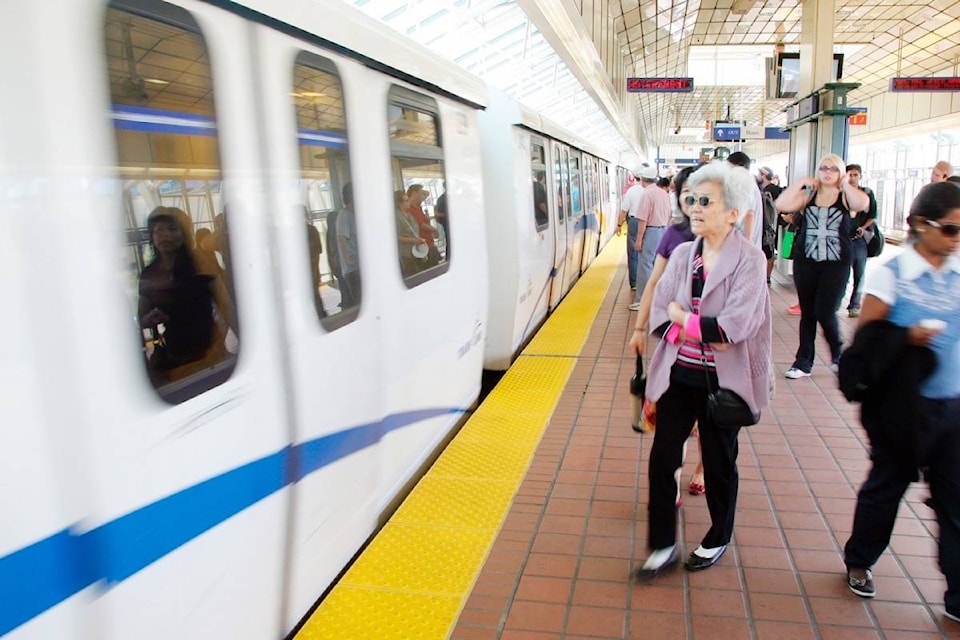TransLink has seen a 5.7-per-cent jump in ridership in the first six months of 2017 compared to the same time last year.
The agency broke down the numbers in a technical briefing on Wednesday morning. SkyTrain saw the greatest jump in riders with 11.9 per cent (74 million), buses went up 2.5 per cent (122.5 million), and SeaBus saw a 5.7-per-cent (2.7 million) increase. The West Coast Express dropped by 6.1 per cent (1.2 million). The numbers also revealed a jump in Saturday and weekday evening boardings.
“This is the first time we’ll have hit 200 million boardings in a six-month period, building on the record ridership from last year,” said vice-president of planning and policy Geoff Cross. TransLink ridership grew by 4.5 per cent in 2016.
“Six per cent over six per cent is definitely an unusual level.”
While growth is expected to continue, Cross admitted that until new SkyTrain cars come in, the lack of cars will begin to limit ridership increases.
RELATED: TransLink adds ‘accountability centre’ to make more data public
South of the Fraser saw the biggest hike in numbers, with annual boardings up by 10 per cent or 3.7 million. The route with the highest growth in all of Metro Vancouver was the 96 B-Line, which saw 570,000 more boardings in 2016. TransLink called that a “good precursor” to light-rail transit that would run a similar route between Guildford and Newton.
RELATED: No changes expected for West Coast Express: TransLink CEO
In 2016, the most crowded bus stops South of the Fraser were the 319 Scott Road/Newton Exchange, the 351 between Bridgeport and Crescent Beach, the 502 Surrey Central/Langley Centre and the 555 Lougheed Station/Carvolth Exchange. The data allowed TransLink to put in larger buses on busier routes during peak times.
“Four per cent of our total hours are overcrowded,” Cross said.
RELATED: TransLink fare evasion tickets drop 19 per cent in 2016
He attributed the uptick to “employment growth, where the population is growing, and thus the trips,” noting these stats allow staff to plan for future service increases and route changes, as well as appealing for more funding. He also pointed to public transit’s continued affordability compared to driving.
“We have not had a fare increase since 2013. We just put in our first in July of this year,” said Cross. “That means relatively speaking, transit is getting less and less expensive relative to driving a vehicle.”
As for slower bus travel times across all of Metro Vancouver, Cross said the transit authority still sees it as a concern.
“That is not changing at all,” said Cross. “You’re fighting for limited road space in that regard.”
Like us on Facebook and follow us on Twitter.
